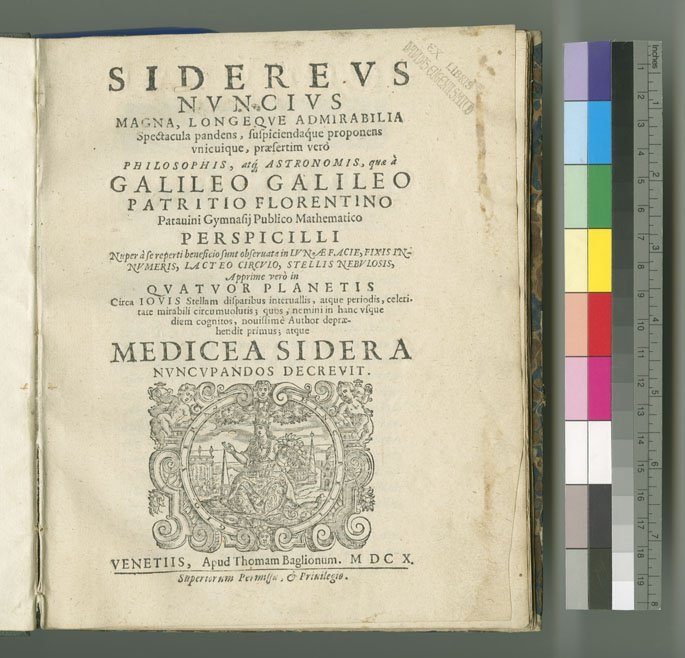- About MAA
- Membership
- MAA Publications
- Periodicals
- Blogs
- MAA Book Series
- MAA Press (an imprint of the AMS)
- MAA Notes
- MAA Reviews
- Mathematical Communication
- Information for Libraries
- Author Resources
- Advertise with MAA
- Meetings
- Competitions
- Programs
- Communities
- MAA Sections
- SIGMAA
- MAA Connect
- Students
- MAA Awards
- Awards Booklets
- Writing Awards
- Teaching Awards
- Service Awards
- Research Awards
- Lecture Awards
- Putnam Competition Individual and Team Winners
- D. E. Shaw Group AMC 8 Awards & Certificates
- Maryam Mirzakhani AMC 10 A Awards & Certificates
- Two Sigma AMC 10 B Awards & Certificates
- Jane Street AMC 12 A Awards & Certificates
- Akamai AMC 12 B Awards & Certificates
- High School Teachers
- News
You are here
Mathematical Treasures - Galileo's Siderius Nuncius

This is the title page of the Siderius Nuncius (Starry Messenger) of Galileo (1564-1642), published in 1610. The page reads, "The Starry Messenger, Revealing great, unusual, and remarkable spectacles, opening these to the consideration of every man, and especially of philosophers and astronomers; as observed by Galileo Galilei, Gentleman of Florence, Professor of Mathematics in the University of Padua, with the aid of a spyglass, lately invented by him, In the surface of the Moon, in innumerable Fixed Stars, in Nebulae, and above all in four planets swiftly revolving about Jupiter at differing distances and periods, and known to no one before the author recently perceived them and decided that they should be named The Medicean Stars." This book was a report on Galileo's first investigations with a telescope, although the telescope was certainly not "invented" by him. The discussion of the moons of Jupiter was influential in gaining acceptance for the Copernican theory of the solar system.

This page gives Galileo's initial sketches of the surface of the moon, with various craters, and the line between darkness and light clearly visible.
Another copy, autographed by Galileo and owned by the University of Oklahoma, may also be viewed in Convergence.
Frank J. Swetz and Victor J. Katz, "Mathematical Treasures - Galileo's Siderius Nuncius," Convergence (January 2011)




